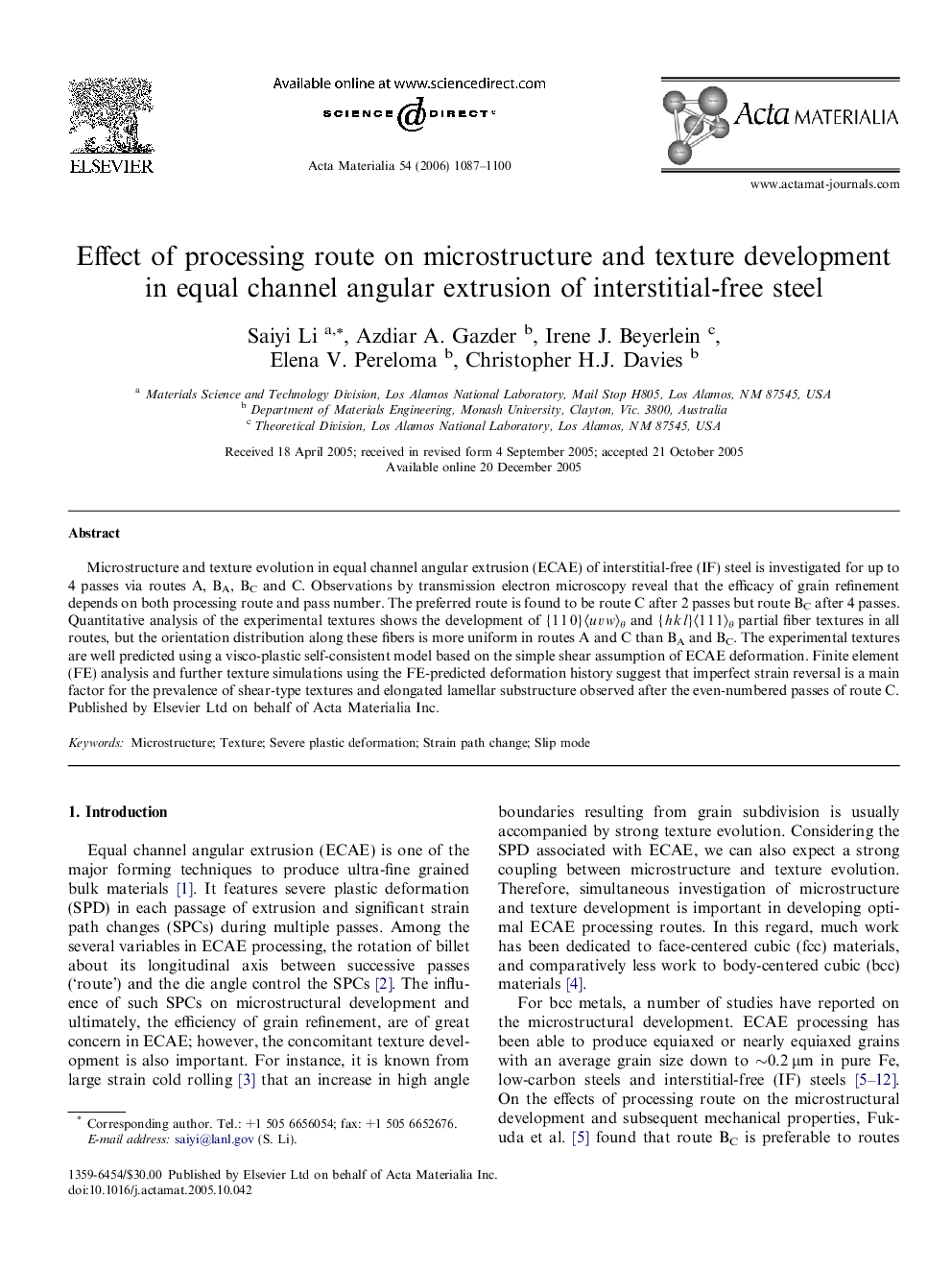| Article ID | Journal | Published Year | Pages | File Type |
|---|---|---|---|---|
| 1450575 | Acta Materialia | 2006 | 14 Pages |
Microstructure and texture evolution in equal channel angular extrusion (ECAE) of interstitial-free (IF) steel is investigated for up to 4 passes via routes A, BA, BC and C. Observations by transmission electron microscopy reveal that the efficacy of grain refinement depends on both processing route and pass number. The preferred route is found to be route C after 2 passes but route BC after 4 passes. Quantitative analysis of the experimental textures shows the development of {1 1 0}〈u v w〉θ and {h k l}〈1 1 1〉θ partial fiber textures in all routes, but the orientation distribution along these fibers is more uniform in routes A and C than BA and BC. The experimental textures are well predicted using a visco-plastic self-consistent model based on the simple shear assumption of ECAE deformation. Finite element (FE) analysis and further texture simulations using the FE-predicted deformation history suggest that imperfect strain reversal is a main factor for the prevalence of shear-type textures and elongated lamellar substructure observed after the even-numbered passes of route C.
